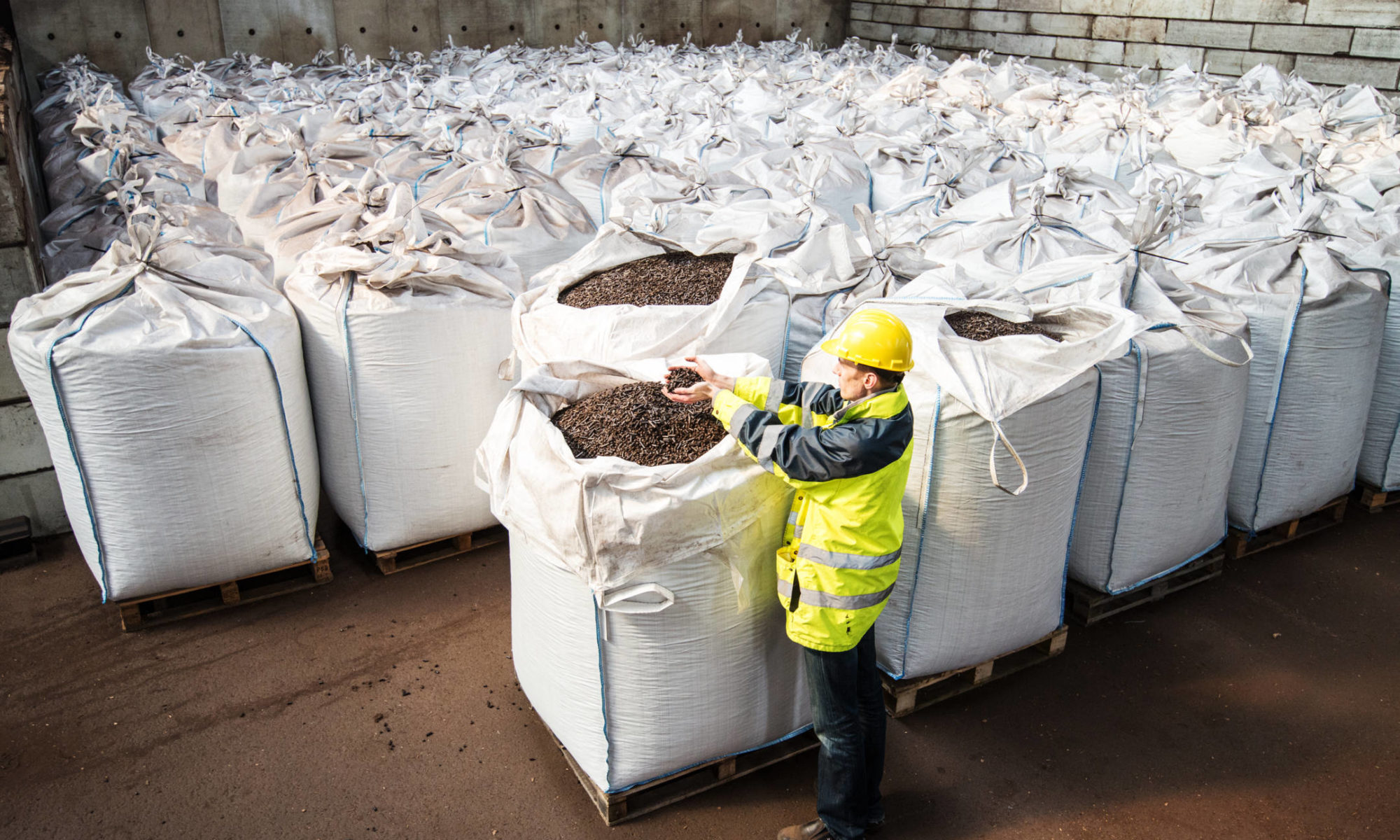Torrefaction is a thermal process which converts woody biomass and agricultural residual flows into high-grade, solid biofuels. When the biomass is heated to temperatures between 250 and 300 degrees, the moisture evaporates and low-calorific components are gasified. The hemi-cellulose decomposes and a compact product is created with a high calorific value.
Topell had perfected this process so that the wood pellets produced had optimum combustion characteristics for co-firing in coal-fired power stations. These so-called ‘black pellets’ were produced in large quantities in a modern factory in Duiven and delivered to the Amer power plant of RWE. As a backup, a purchasing contract was signed with Vattenfall’s (Nuon) Willem-Alexander power plant in Buggenum. A subsidy scheme of the Dutch Ministry of Economic Affairs enabled the co-firing with biomass. This dependence on the government policy also turned out to be the Achilles heel of the company. When ‘Buggenum’ closed on 1 April 2013 and then the co-firing subsidy of the Amer power plant also finished, the curtain fell for the Topell factory. The entire market behind the successful technology collapsed in a single action, to the bewilderment of the company’s management. Liquidation of Topell’s factory was unavoidable.
More flexible organisation
Maarten Herrebrugh, managing director at Blackwood and former COO of Topell, remembers that black day all too well. But the founders of Topell did not give up. ‘The old Topell consisted of a technology group of more than ten people and a factory with 25 operators. Our torrefaction technology is the only one in the world which has been proven on an industrial scale and whose application as large-scale replacement of coal has also actually been demonstrated. Very likely to succeed, therefore. Unfortunately, we couldn’t keep the old structure going. We did try to keep running as a demonstration plant for ten months, but couldn’t meet the costs. That is when we set up Blackwood, a straight technology company which develops and licenses technology in the torrefaction field.’
The business model of Blackwood is different to that of Topell. The new organisation is more flexible and is also spreading its wings internationally through partnerships. The knowledge component has remained, but the high-risk torrefaction production is a thing of the past. ‘What we have is a core team which is supported by freelancers who used to work for Topell in the past. This flexible model has helped us build a financially healthy foundation with projects well beyond our country’s borders. We are now financed by turnover and not by capital injections from investment companies. That is a ‘subtle’ difference with the past.’
Different market focus
For the Dutch market, the focus was shifted to small-scale applications of torrefaction for local energy generation in businesses and households. ‘To supply coal-fired power stations with black pellets you come up against a shortage of biomass here and the costs go sky-high. That makes it extremely difficult for a large factory to make a profit. One option is to upgrade local biomass in order to serve the local market. With the support of the Province of Gelderland, we did initial testing with our pellets in local, wood-fired heaters. These heaters use a great deal of wet woodchips. The quality fluctuates greatly with the seasons, making the efficiency drop. The poor combustion increases the emissions greatly and you are left with incompletely incinerated ash residue. If you co-fire torrefied chips, they operate more stably, cleaner and with higher efficiency.’
Swimming pool heating
The results of this market exploration were so positive that a course of action was set out together with partner Boonstoppel Engineering to develop this market further. The applications range from wood-fired heaters in households to biomass-fired combined heat and power plants. The capacity concerned ranges from a few dozen kilowatts to several megawatts. Herrebrugh gives the example of the efficiency improvement with wood chip incineration in systems for the heating of a swimming pool. These systems are around 2 megawatts. Municipalities currently often use local wood waste to feed them. ‘Those kinds of wood chips contain 40 to 55 percent water which first has to evaporate in the boiler. It would be much better for the stability of the boiler if the moisture was first removed via a torrefaction process. That delivers a high-grade fuel with fixed efficiency for the end user side. Logistically it also offers huge benefits. You aren’t transporting water any more.’
South Africa
Blackwood still targets the ‘coal replacement market’, but outside of the Netherlands. ‘We have entered into discussions for this with parties which are interested in building factories like in Duiven in countries with a lot of biomass. We are still in the negotiation stage. What I can reveal, is our South African cooperation with Eskom which operates fourteen coal-fired power stations there. Large plantation forests are used in South Africa. That provides enough biomass to make the torrefaction process cost-effective.’
Of course there are other rivals, but Blackwood can rely on a technological head start. ‘That is the heart of the system. The biggest difference between our technology and that of the competition is that they still rely heavily on existing technology for drying the biomass, while torrefaction goes further than drying alone. Our technology is tailored much more specifically for the torrefaction process itself. That allows us to perform the process much faster and with greater control. Actually it is really good that there is competition. If we as a technological company were the only ones in torrefaction, there might not be a market for us either.’



